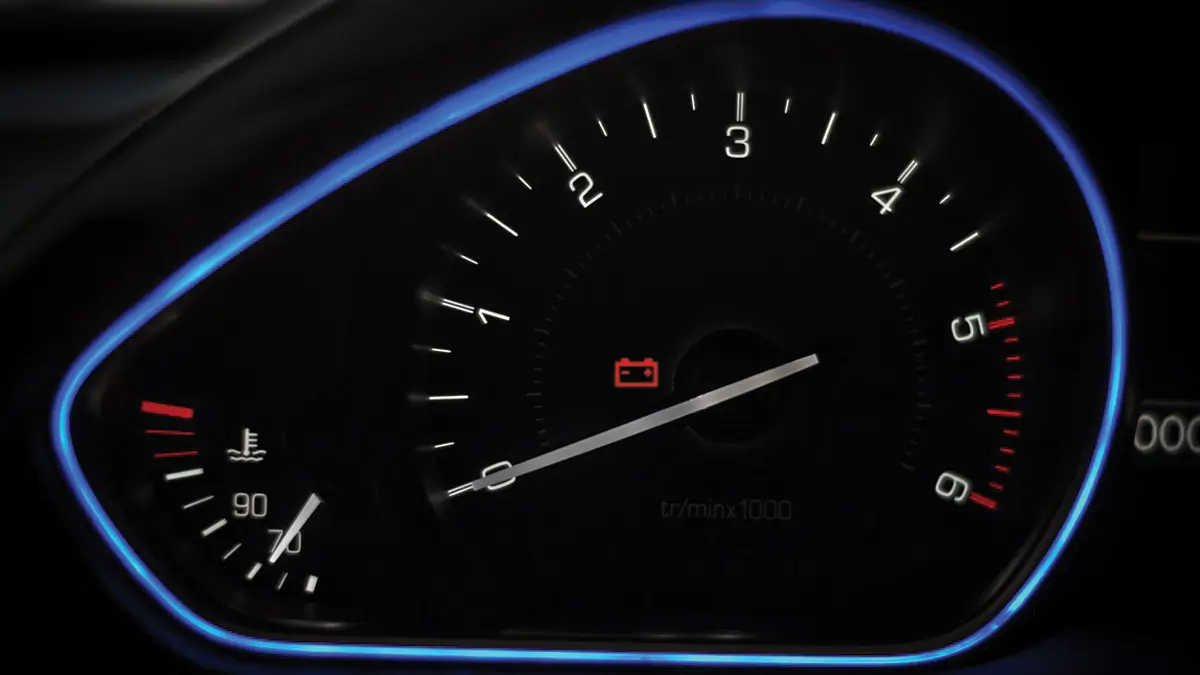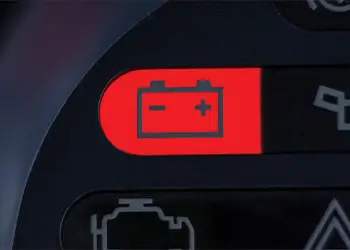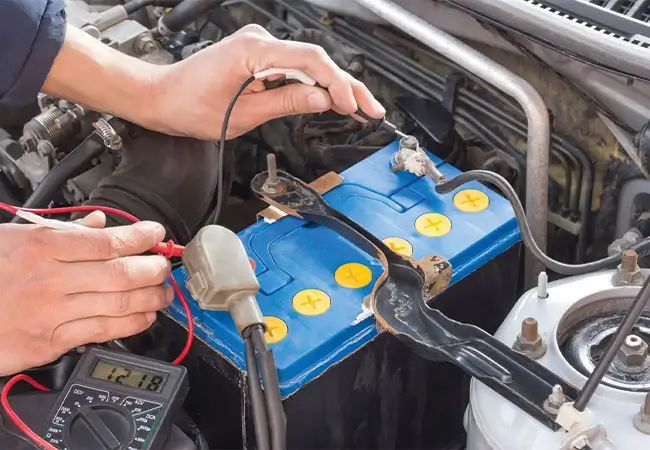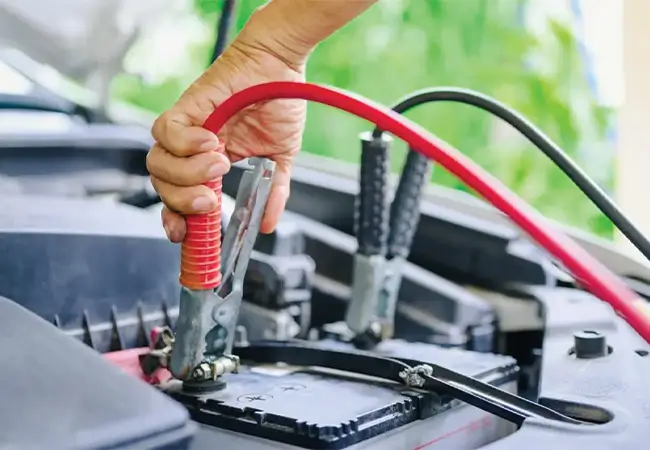Has the battery warning light just appeared on your car’s dashboard? This indicator is never trivial. It usually signals a fault in the car’s charging system, most often related to the alternator or the battery itself.
How can you identify it?
Why does it light up?
And most importantly, what should you do when it turns on?


Are you looking for a car scanner ?
How to identify the battery warning light?

The battery warning light is easy to recognize: it looks like a small rectangular battery with clearly visible "+" and "-" symbols.
It briefly illuminates when you turn the ignition on — this is perfectly normal. However, if it stays on while the engine is running, it indicates a malfunction in the charging circuit.
Why does the battery warning light come on?
What is the correct voltage for a healthy battery?
The battery warning light usually turns on when the battery is experiencing a voltage issue.
The voltage of a fully charged battery, with the engine cold, is around 12.7 volts.
If the voltage is below or above this value, the battery is considered to be operating under suboptimal conditions.
This may lead to:
- Starting difficulties, or even complete failure to start;
- Malfunctions in electronic systems (headlights, car radio, GPS...);
- Premature wear if no maintenance is performed.
Check your battery's voltage using our Klavkarr 310 Car Diagnostics Scanner or a multimeter.
What are the symptoms of a weak or faulty battery?
Several signs may indicate that your battery is discharged. Here are a few:
- The battery light stays on constantly;
- Lights and indicators are very dim or not working at all;
- Accessories such as wipers, electric windows, horn, radio, or electric sunroof stop working or function poorly.
Main reasons the battery light stays on

There are many possible reasons for this issue. Here are the most common:
- Aging battery
- Faulty alternator
- Poor electrical connection
- Defective accessory belt
- Blown fuse
- Extreme temperatures
- Long vehicle inactivity
- Using electrical equipment with the engine off
The average car battery lifespan is 4 to 6 years. Beyond this, capacity declines.
The alternator is crucial: it recharges the battery while the engine runs. If it malfunctions, the battery won’t recharge.
Corroded terminals, loose connections, or damaged cables can cause poor contact or even short circuits, affecting voltage stability.
The accessory belt drives the alternator. If it's worn or broken, the alternator can’t charge the battery, and the red battery warning light turns on.
A damaged fuse in the charging or control circuit can disrupt current flow or give false voltage readings, triggering the warning light.
Both hot and cold temperatures can negatively affect battery performance.
Leaving a car unused for a long time can lead to gradual or even complete battery discharge.
Using the headlights, AC, or radio without the engine running drains the battery without it being recharged, leading to partial or full discharge.

Are you looking for a car scanner ?
What to do if the battery warning light turns on?

The warning light turns on while driving
- Stay calm:
- Reduce electrical consumption:
- Find a safe place:
- Test the battery
If the vehicle is driving normally, there’s no need to stop immediately. However, avoid driving too far to prevent complete battery discharge.
Turn off all non-essential accessories: heating or air conditioning, radio, headlights if possible, phone chargers. Also avoid using power windows or panoramic roof.
Head to your home or a garage — once the engine is turned off, it may not restart.
Use your klavkarr 310 or visit a professional.
The warning light turns on at startup
This may indicate a weak or completely discharged battery.
- Inspect the connections:
- Check battery voltage:
- Contact a professional:
Ensure the battery terminals are clean and tight. Clean if needed (engine off), and check that the belt isn’t broken. Check the fuse too — it may need to be secured or replaced.
Use our klavkarr 310 to diagnose the battery and determine whether the issue comes from the battery or the alternator.
You can also use a multimeter: if voltage is below 12.4V, consider recharging or replacing the battery.
If the issue persists or to carry out any necessary repairs.
The vehicle won’t start
You try to start the car, but nothing happens when you turn the key!
- Check for failure signs: dashboard off, weak interior lighting, no engine sound… These all point to a dead battery.
- Turn off all electrical accessories: (headlights, fan, radio) to avoid further draining the battery.
- Check battery voltage: using the klavkarr 310 or a multimeter. If under 12V with the engine off, the battery is likely completely discharged.
- Try jump-starting with jumper cables: from another car or a battery booster, following the correct order (+ then –).
- Let the donor engine run: for a few minutes before starting your car.
- Drive for at least 15 minutes: to partially recharge the battery.
- Replace the battery if the problem comes back quickly — a weak battery won’t fully recover even after recharging.
- Have the alternator and charging system checked: if your battery is recent.

What precautions can help extend your car battery's lifespan?
To ensure a longer battery life, follow these tips:
- Park your car in a sheltered place ideally protected from cold and moisture, such as a garage or under a cover.
- Drive regularly or simply run the engine for 15 minutes once or twice a week.
- Avoid very short trips as they require a lot of energy to start and don’t allow proper battery recharge.
- Don’t leave anything on such as headlights or other electrical devices.
On average, your battery can last up to 2 months without driving before becoming fully discharged.
Conclusion
The battery warning light should never be ignored! It indicates a problem in the charging system that could quickly lead to a breakdown. Proper battery maintenance, regular checks, and a few simple habits will help ensure a long battery life and avoid unexpected issues.
Learn more
That’s all for this article about the battery types — feel free to share your tips or questions in the comments!
You can also share this article with your friends on social media!

